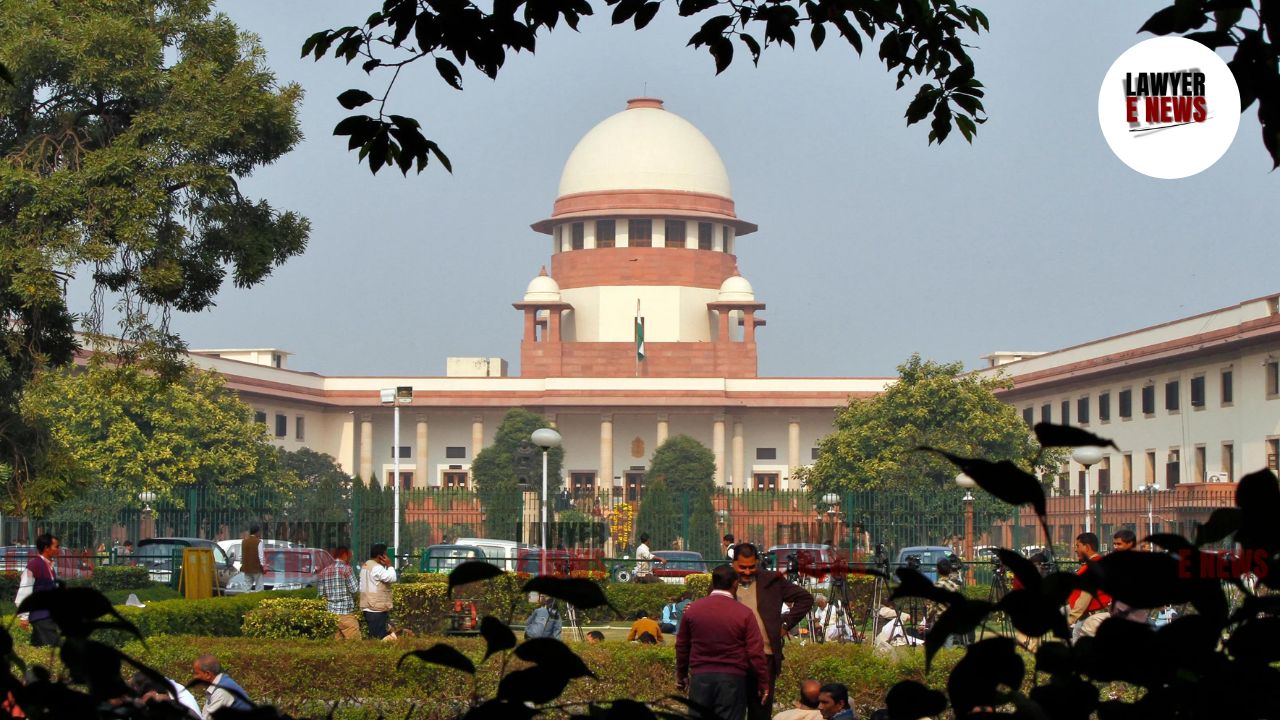-
by Admin
14 December 2025 5:24 PM



Supreme Court of affirming his conviction and life sentence for murdering his wife, Smt. Pushpa. The Court upheld the findings of both the trial court and the High Court, which had convicted him under Sections 302 (murder), 201 (causing disappearance of evidence), and 498A (cruelty by husband) of the Indian Penal Code (IPC).
Rejecting the appellant’s plea of alibi and arguments on the nature of the death, the Court concluded that the prosecution had established a complete chain of circumstantial evidence, making the appellant’s culpability evident.
“The Death Was Homicidal, Not Suicidal”: Supreme Court Rejects Suicide Claim
The appellant, Ashok Verma, and his wife Pushpa were married in 2006 and lived together in their matrimonial home. Evidence presented during the trial revealed that the appellant was addicted to gambling and had mortgaged Pushpa’s jewelry to fund his habit. This led to frequent instances of cruelty and physical abuse, which Pushpa confided to her sister, PW-8 (Aarti).
On January 26, 2012, Ashok Verma informed Pushpa’s family that she had hanged herself. When her family, including PW-8, arrived at the appellant’s home, they found Pushpa’s body suspiciously positioned—on her knees on the bed, with a dupatta tied around her neck and attached to a wooden beam near the ceiling fan. Despite objections from her family, the appellant cut the noose and rushed her to the hospital, where she was declared dead.
Initially registered as a suicide under Section 174 of the CrPC, the case was later converted into a murder investigation, leading to the appellant’s arrest and conviction.
Key Legal Questions in the Case
Homicidal vs. Suicidal Death:
Was the death of Smt. Pushpa a case of suicide or homicide?
Plea of Alibi:
Could the appellant successfully prove that he was elsewhere at the time of the incident?
Applicability of Section 106, Evidence Act:
Did the appellant discharge his legal obligation to explain the events surrounding his wife’s death, which occurred in their matrimonial home?
Supreme Court’s Findings
Death Confirmed as Homicidal
The Court rejected the appellant’s claim that Pushpa’s death was suicidal, relying on medical evidence and witness testimony. The post-mortem examination, conducted by PW-11 (Dr. P. Akhtar), revealed strangulation as the cause of death. The position of the body, as described by PW-8, was inconsistent with suicide.
The appellant argued that the non-rupture of Pushpa’s hyoid bone suggested suicide. However, the Court noted that this was not conclusive evidence, citing Satish Nirankari v. State of Rajasthan (2017), which held that non-rupture of the hyoid bone does not rule out strangulation.
“Non-rupture of the hyoid bone does not conclusively negate strangulation. The body’s position and lack of self-inflicted injuries firmly establish the death as homicidal.” [Para 17]
Plea of Alibi Rejected as False
The appellant claimed he was at a nearby garden at the time of the incident and returned home only after the alleged suicide. This claim was supported by the testimony of DW-1, a defense witness. However, the Court dismissed the plea, stating that the defense failed to provide strict proof of alibi as required under Binay Kumar Singh v. State of Bihar (1997).
The Court held that the appellant’s proximity to the scene of the crime and his failure to establish a convincing alibi further implicated him.
“The plea of alibi requires strict proof. The appellant’s claim that he was at a nearby garden does not satisfy the standard of evidence required for alibi. A false alibi strengthens the circumstantial evidence against him.” [Para 10, 16]
Failure to Explain Events Under Section 106, Evidence Act
The Court invoked Section 106 of the Indian Evidence Act, which places the burden on the accused to explain events that occurred within his exclusive knowledge. Since the incident occurred in the matrimonial home, where only the appellant and the deceased resided, the Court held that Ashok Verma was legally bound to provide a satisfactory explanation for Pushpa’s death. His failure to do so supported the prosecution’s case.
“The accused was bound to explain the occurrence inside the matrimonial home. His failure to do so, coupled with the evidence on record, points to his culpability.” [Para 20]
Circumstantial Evidence Establishes Guilt
The Court concluded that the prosecution had successfully established a complete chain of circumstantial evidence, which left no room for doubt. Key elements of the prosecution’s case included:
Witness Testimony:
PW-8 testified about the appellant’s history of cruelty and the suspicious position of the body when she arrived at the scene.
Medical Evidence:
The autopsy revealed strangulation as the cause of death, and the absence of self-inflicted injuries ruled out suicide.
Behavior of the Accused:
The appellant’s decision to inform witnesses before cutting the noose and his attempt to portray the death as suicide raised suspicion.
False Alibi:
The false alibi was treated as an additional link in the circumstantial chain, further implicating the appellant.
The Supreme Court affirmed the findings of the trial court and the High Court, upholding Ashok Verma’s conviction under Sections 302 (murder), 201 (causing disappearance of evidence), and 498A (cruelty by husband) of the IPC. The Court dismissed the appeal, noting that the prosecution had established the appellant’s guilt beyond a reasonable doubt.
“The cumulative effect of the evidence and circumstances firmly establishes the appellant’s guilt. The plea of alibi and arguments against the nature of the death fail to withstand scrutiny.” [Para 21]
Date of Decision: December 19, 2024
